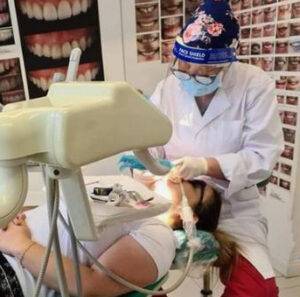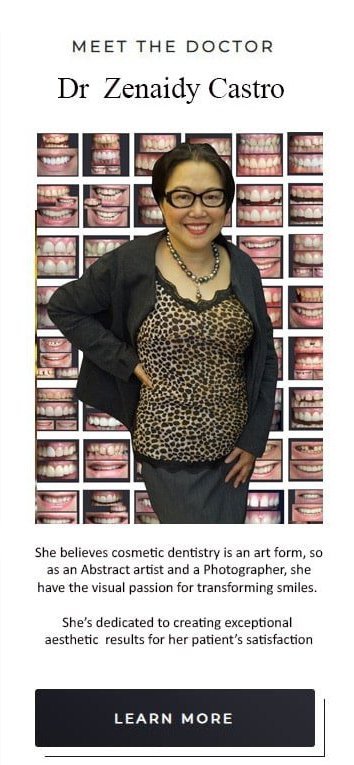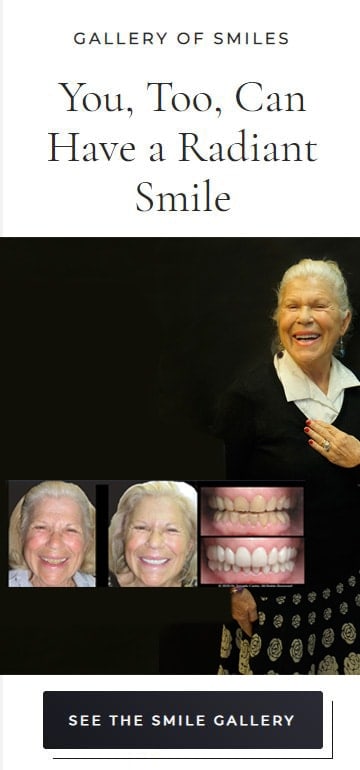




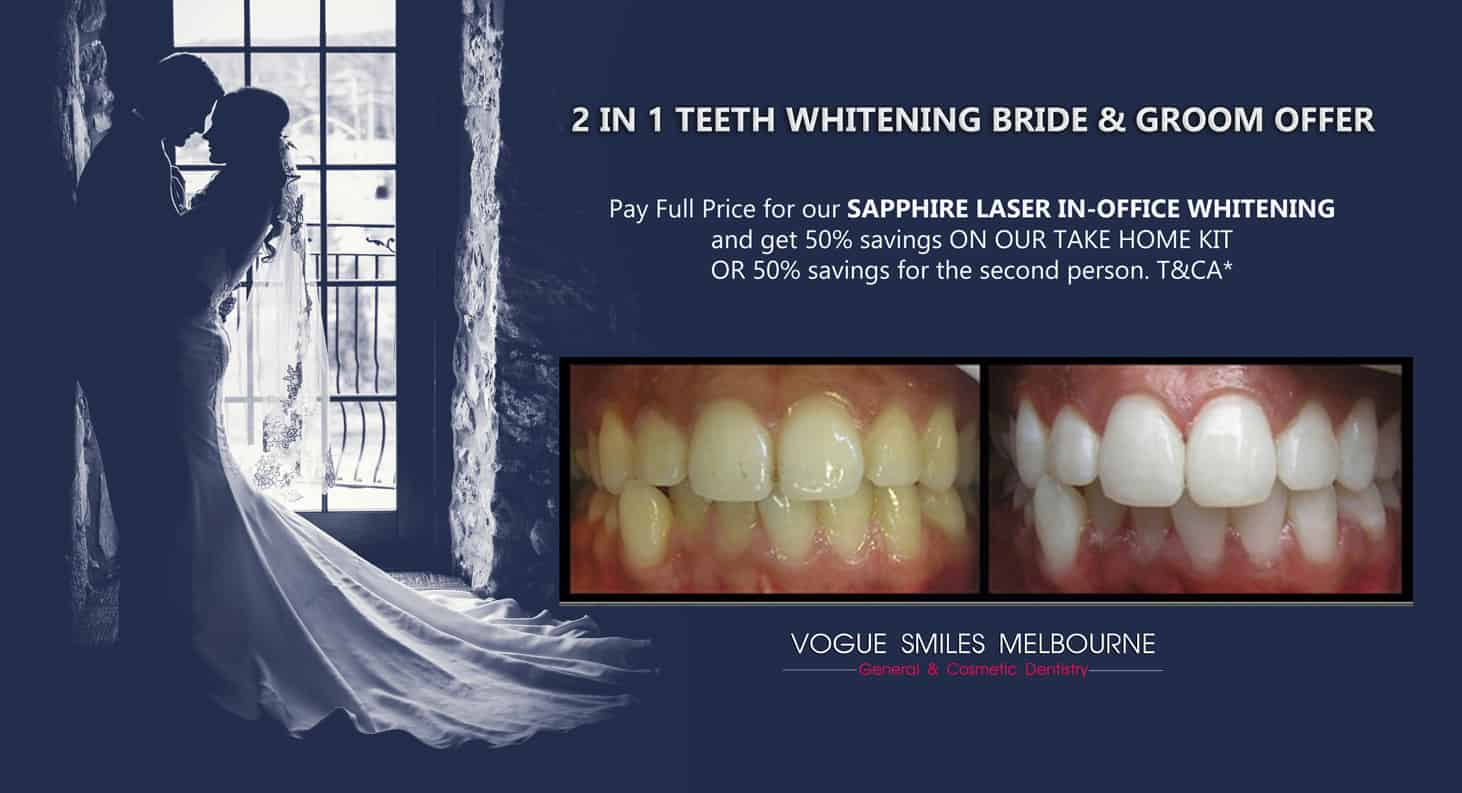
Professional tooth whitening is the most commonly performed cosmetic dentistry procedure in the country, and for very good reasons: it is much more effective, safer, more comfortable, and less aggravating than whitening with a store-bought kit. If your teeth are stained and you feel uncomfortable with their appearance, Dr. Castro would be happy to discuss your teeth whitening options.
Is your smile holding you back? Research shows that people who smile more are more likely to be successful across many life domains than people who smile less. Having straight, healthy teeth can give you the confidence you need to show the world a big beautiful smile. And, a beautiful new smile may help open the doors to a fabulous new job, finding the perfect mate, making new friends, a relationship or simply a pleasant meeting. A great smile has magical powers.
Never EVER underestimate the power of your smile! The Advantages of Whiter Teeth Are Life-Changing.
Discoloured and stained teeth affect your self-confidence. Teeth whitening are a great way that boosts confidence and enhance your physical appearance and psychological well-being.
Get your teeth white and boost your self-confidence. We can help you with different smile makeover procedure including teeth whitening.
Transform your Smile with our PREPLESS OR NO-PREP PORCELAIN VENEER SPECIALS AND PACKAGE OFFER at $900 per tooth or from $45 weekly TLC payment plan* (Minimum 10 teeth to get this Veneer Package Specials)
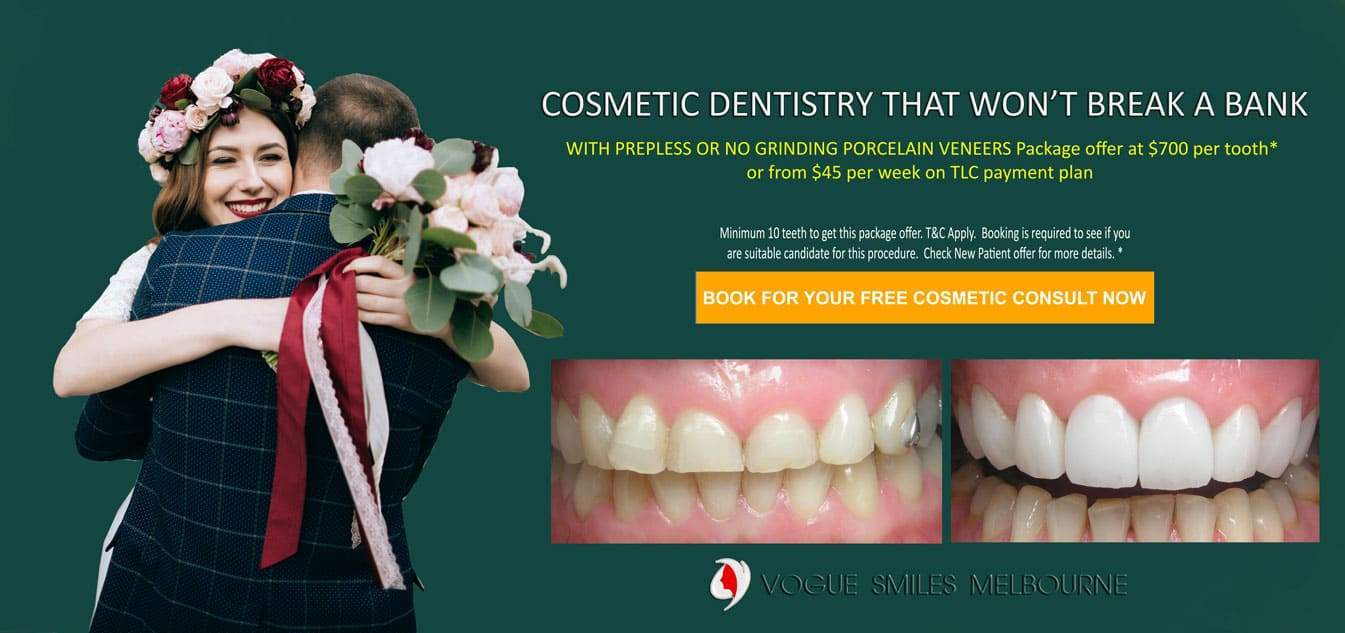

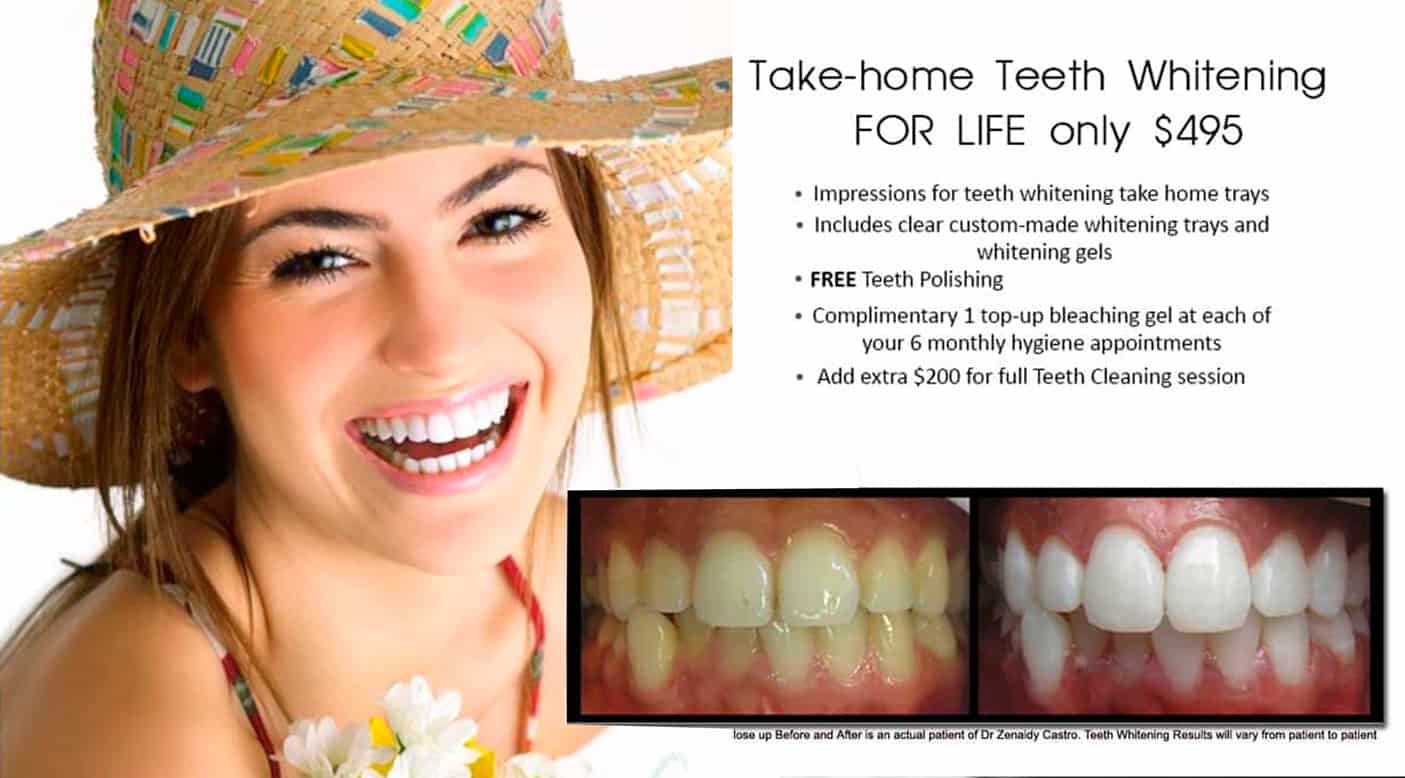


- All bleaching systems whiten your teeth, but when bleaching is completed, the colour will fade about half a shade. Using the tray method in conjunction with In-Office whitening helps to maintain, stabilize and advance the desired result.
- Bleaching can only be performed on clean, healthy teeth and healthy gums.
- Bleaching will not whiten existing fillings and crowns. Existing work may need to be changed so as to achieve consistent colour.
- Bleaching only works on enamel. Teeth which have thin enamel due to chemical or physical abrasion will whiten poorly.
- Sensitive teeth are the most commonly reported side effect.
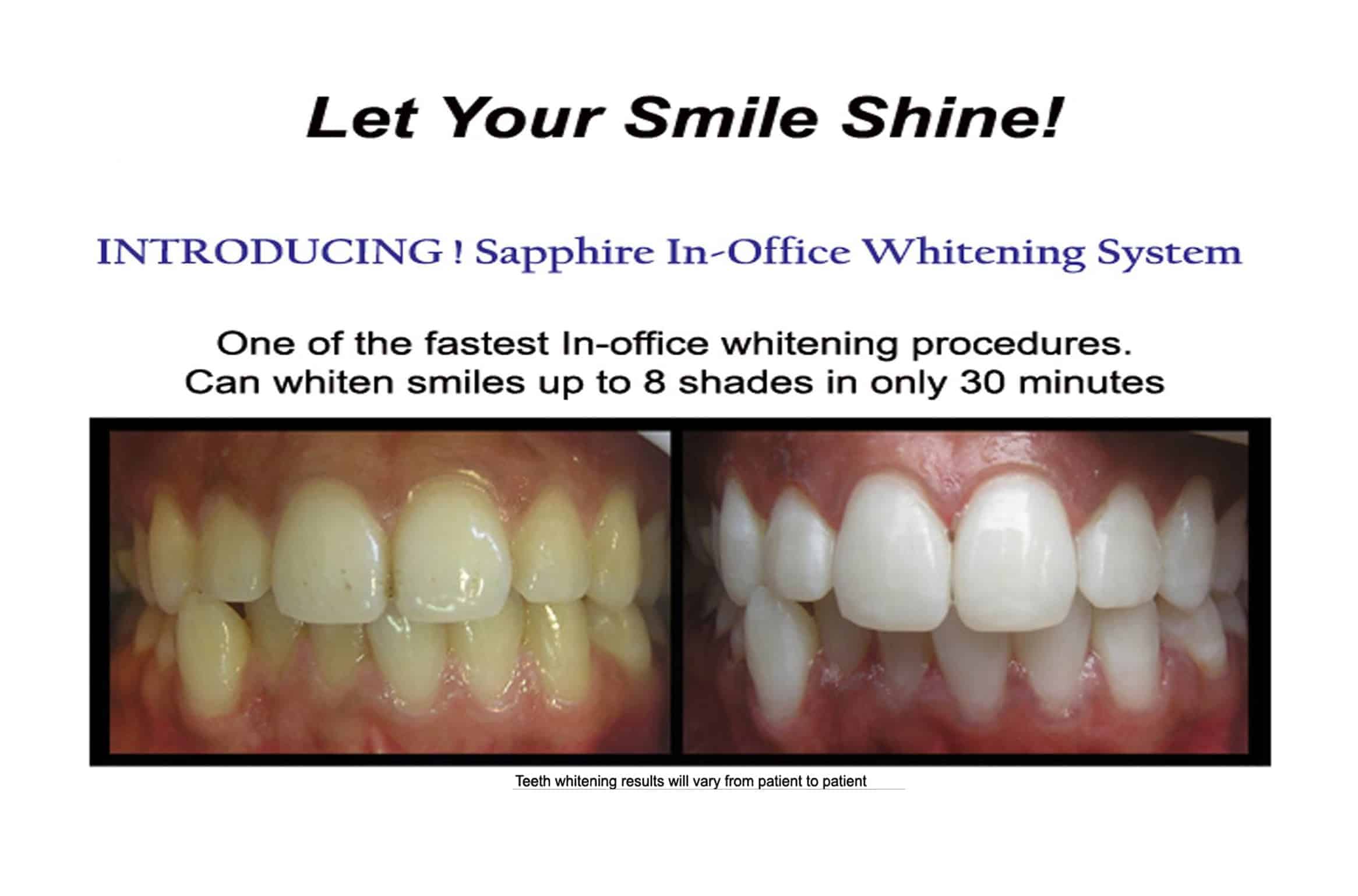
It is not advisable to undertake whitening procedures under these circumstances
- Age and pregnancy issues. Here whitening is not available for those under 16 years of age as the nerve of the teeth is large at this stage of life. It could render the nerve more sensitive or cause irritation. Pregnant or lactating women are also not advised to use this method.
- Sensitive teeth and allergies. Those having sensitive teeth or gums, with receding or defective repairs need to see their dentist before engaging a whitening process. Allergies to peroxide will definitely not be favoured with a bleaching product
- Gum disease, damaged teeth, cavities, and exposed roots. People with damaged teeth or worn enamel are not advised to use any bleaching method. A bleaching agent might enter any cavity and cause an inside damage. Hence it is necessary to treat such defects before launching into a whitening session. Bleaching does not work on roots also since they do not have the enamel layer on which bleaching acts.
- Fillings, crowns and restored portions. Dental restorations sometimes make use of colored fillings or resin based products (crowns, veneers, bridges) and these do not whiten with bleaching. So an unequal whitening pattern may appear if bleaching is applied under these conditions. It is better to proceed with whitening before attempting any restoration exercise on the teeth. Best on your individual needs, we will advise on the method of treatment applicable in such cases, and confirming whether any importance is to be given to the bleaching or restoration exercise first.
- Those expecting dramatic happenings may be disappointed with results below their expectations. People using harmful products like tobacco and wine need to be aware that the result may not stay for longer periods if they do not avoid such products. A more balanced expectation taking into consideration one’s own lifestyle and hygiene pattern would give a more objective approach to the results’ appreciation. A good standard indication is comparison of color of your teeth should be a little whiter than that of your eyes.
- Heavily stained teeth. A light yellowish tint will definitely disappear under bleaching; less effective results would appear on brown tinted ones where as grayish or purple stained ones may not reveal any effect. Certain blue-gray stains which, are normally caused by tetracycline take even more time to whiten and require around 6 month of intensive care at the dentist’s. Darker stains may be appropriately treated by other methods, for example: veneers, crowns, bonding.
The peroxide ingredient in most teeth whitening products is what actually bleaches the enamel and makes your teeth whiter. The strength of the whitening treatment typically depends on the strength of the peroxide contained in the whitening product. The current percentages of peroxide in teeth whitening products are 10, 16 and 22 percent. The higher the percentage of peroxide, the higher the sensitivity and shorter wearing time.
The bleaching gel is usually hydrogen or carbamide peroxide that breaks down into oxygen molecules. The concentration of hydrogen peroxide or carbamide peroxide in the gel is not as strong as that used in power or laser bleaching procedures. No strong light source or laser is needed to activate the bleaching agent. Instead, it is contact with something organic, in this case the teeth, that causes the gel to release oxygen. These molecules go into the tiny pores of the enamel and dentin, and break up the stains that block out the light.
As the stains are broken into smaller and smaller pieces, more light passes through the teeth and makes them look lighter. Stains that are accumulated over time that are yellow to slightly brown produce the best results. Teeth that are dark brown to blue-gray are the most difficult to bleach because the stain is deeply embedded into the tooth’s structure. These types of stains are usually caused by medications taken during the development of the teeth such as tetracycline, and can take a minimum of three weeks to see results, and as much as six months for complete results.
Depending on the bleaching gel used and the length of time it is worn, results can be seen within an hour, overnight or within three to four days. Complete results can be achieved in as little as a week or as much as several months depending on the source of the stain and the ability of the teeth or tooth to be bleached. The whitening procedure may last for up to three years — even longer in some cases, depending on personal habits. To brighten the color back up, a simple process of bleaching for one or two nights with a single syringe is usually sufficient.
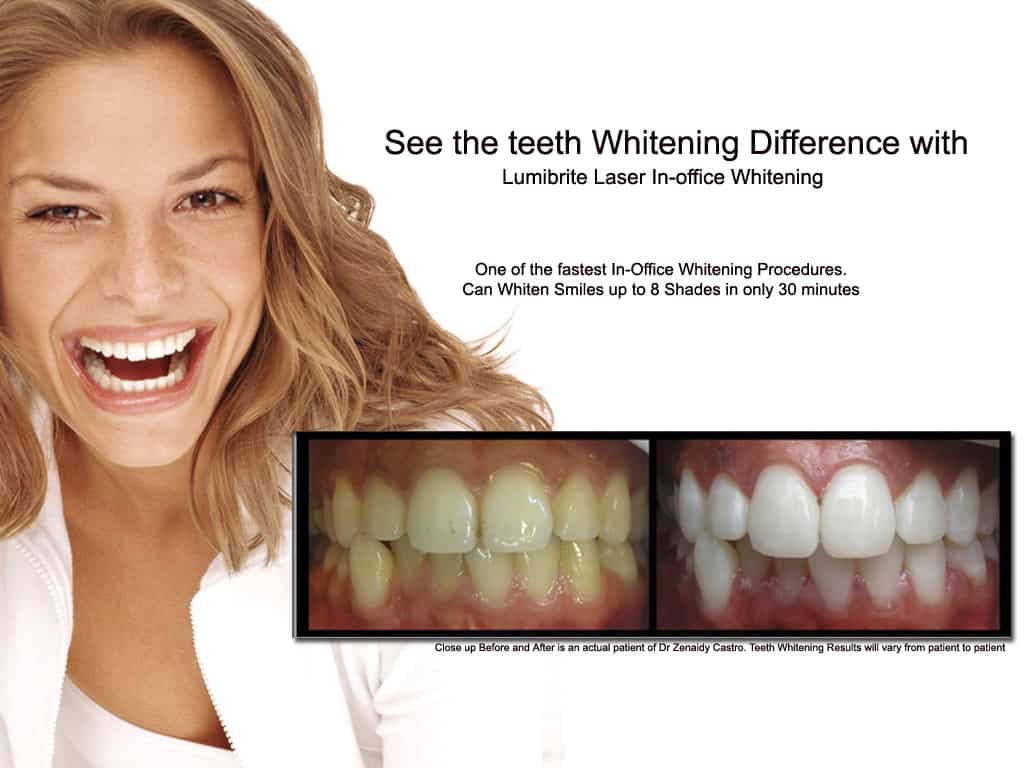
No. Neither tooth whitening systems cause any pain, though some patients may have increased tooth sensitivity that typically lasts for 1-3 days following the in-office procedure.
While these systems can significantly whiten your teeth, they will not prevent future stains from occurring. To maximize the longevity of the results, we suggest clients follow up with post-whitening habits, including a touch-up 12-16 months after the first session, daily flossing, and brushing teeth twice a day with whitening toothpaste.
The amount of discomfort experienced varies from person to person, and depends on the method used. Most adults usually experience little if any discomfort, however, the discomfort should subside within 24 hours. If needed, an over-the-counter anti-inflammatory may help. If the discomfort lasts for more than 2 – 3 days, consult your dentist for more options.
- Decreasing the sensitivity may be as easy as placing a gel fluoride, under your dentist’s instruction, in your bleaching tray for an hour or so. Other materials may be used to address the sensitivity you may experience. Check with your dentist for the best options for your paticular needs. You should discuss your goals, budget, and pain tolerance with your dentist in order to help him/her determine the procedure, or combination of procedures, that will produce the best results for you. If your teeth are sensitive after bleaching, a mild analgesic will usually be effective to make you more comfortable until your teeth return to normal.
- GUM IRRITATION: Temporary inflammation of your gums can be caused by bleaching. This is the result of very small amounts of bleach leaking over the tray. A burning sensation in your gums may also occur. This is a minor problem and will resolve by itself in a few days. Irritation can also result from using the bleaching tray too many hours when you first start bleaching or using the bleaching tray too many hours in a row without a break: It may be necessary to reduce the number of hours you are wearing the bleaching tray or stop using it for a short time to resolve these gum problems.
- SORE THROAT: If you overload the bleaching tray with home bleach, the excess can go down your throat and cause soreness. This soreness will also resolve in several days, assuming you spit out the excess bleach instead of swallowing it.
- LEAKING FILLINGS OR CAVITIES: Most bleaching is indicated for the outside of the teeth (unless you already had a root canal. However, if you have any fillings that are leaking and allow the bleach to get into the inside of the teeth, damage to the nerves could result. In this case the filling needs to be redone prior to the bleaching. In addition, open cavities can also allow bleach to reach the nerves of the teeth. They should also be filled before bleaching.
- CERVICAL ABRASION/EROSION: These conditions affect the roots of the teeth when gums recede, these are grooves, notches or depressions where the teeth meet the gums that look darker than the rest of the teeth. They look darker because there is no enamel in these areas. Even if these areas-are-not-sensitive, bleach can be potcntially penetrate the teeth and damage the nerves. Those areas should not be bleached, but should be filled after the bleaching is completed.
- ROOT RESORPTION: This is condition where the root of the tooth starts to dissolved, either from the inside or outside. Although the cause of the resorption has been determined, studies have shown that its incidence is higher in teeth that have had a root canal and are bleached.
- EFFECT ON FILLINGS: Even though open cavities should be filled or badly leaking filling should be refilled prior to bleaching can cause tooth coloured filling to become softer and make them more susceptible to staining. Therefore, you should be prepared to have any fillings in you front teeth replaced after bleaching. In addition, since bleaching will normally lighten teeth, but not fillings, you may need to have your fillings replaced anyway, so that they will match your newly whitened teeth.
- TAKE NOTE: Tooth colored fillings, crowns, bridges and veneers will not lighten when your teeth are bleached. You’re Responsibilities
- WEARING YOUR BLEACHING TRAY: It will only be effective if you conscientiously wear the bleaching tray for the prescribed number of hours per day.
- COMMUNICATION: If you experience any severe discomfort or other problems, contact us immediately.
- FOLLOW THE MANUFACTURERS INSTRUCTIONS of the Bleaching gel provided.
- It’s a good idea to have a dental cleaning prior to having your teeth whitened to remove surface stains.
Tooth sensitivity is a common side effect of teeth whitening. This can be true even for people who do not otherwise experience sensitive teeth.
If you already have sensitive teeth, the whitening process may exacerbate the condition. This is especially true in cases where store-bought tooth whitening kits are used. While inexpensive and convenient, store-bought tooth whitening kits do not come with customized application trays. This can allow solution seepage, create soft tissue discomfort, and increase the risks of tooth sensitivity.
These and other risks are significantly reduced when you choose to have your teeth whitened by a dentist. However, even professional tooth whitening can result in some discomfort.
The exact cause of tooth sensitivity following whitening is not known. The leading hypothesis revolves around demineralization caused by peroxide in the bleaching gel. According to this theory, enamel erosion allows some of the active ingredients to seep into the dentin, leading to increased sensitivity.
To address this issue, some professional teeth whitening products contain fluoride to strengthen enamel during the bleaching process.
There is typically no cause for alarm with increased tooth sensitivity after whitening. In a majority of cases, any additional sensitivity will self-correct over the course of 24 to 48 hours. During this time, using a toothpaste formulated for sensitive teeth will help. So too will avoiding hot or cold food and beverages until comfort returns.
While extremely rare, any lasting or limiting discomfort should be brought to the immediate attention of one of our experienced dentists.
Tooth whitening is among the safest and most effective cosmetic dentistry procedures available. Requiring neither tooth preparation nor a recovery period, this procedure can offer immediate results when performed in-office. We also offer take-home kits that can be used in the comfort of your own home to gradually lighten teeth over several weeks. These come with customized application trays, helping to prevent solution seepage and further reducing risks of tooth sensitivity.
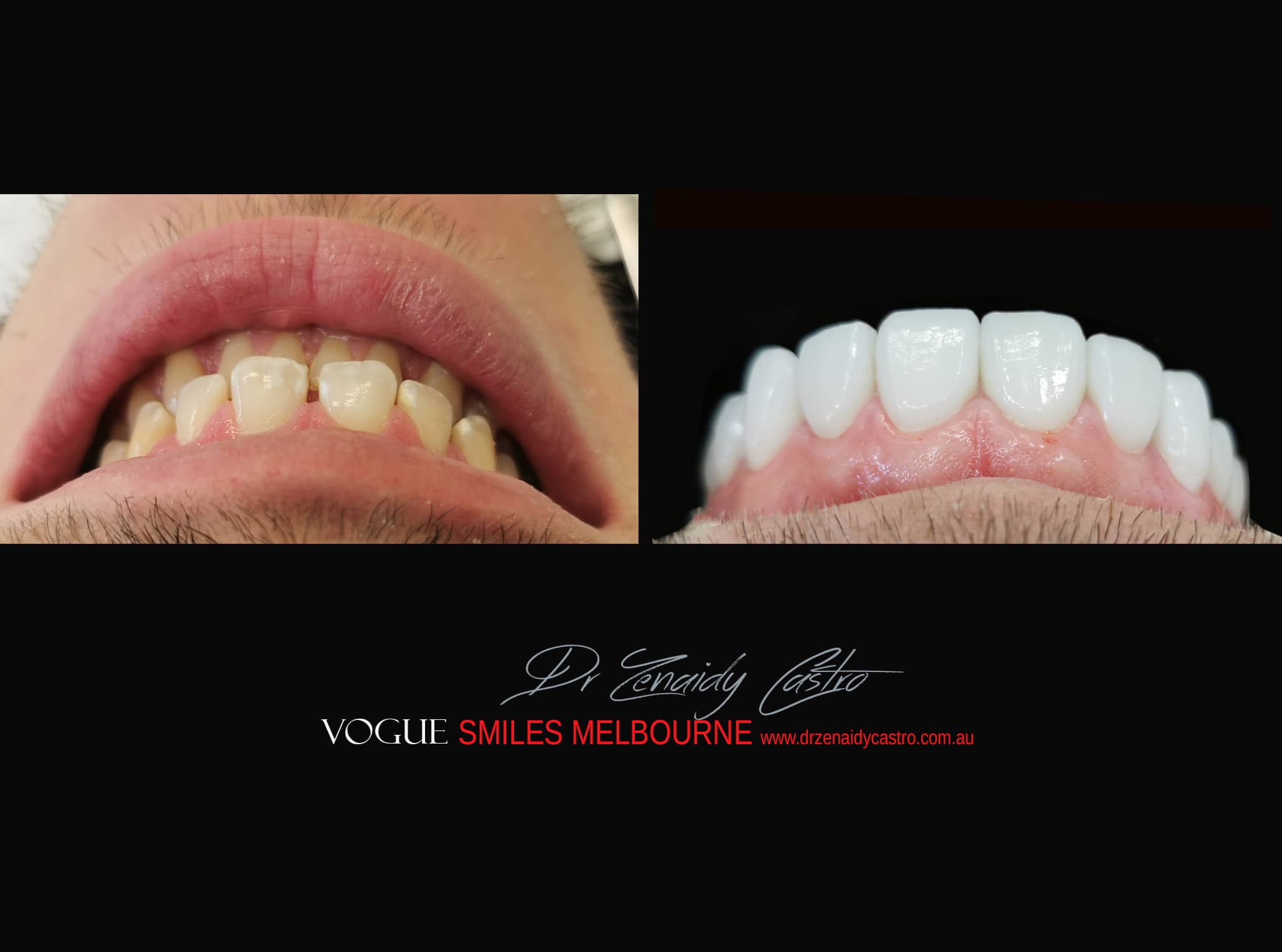
Teeth whitening usually lasts from one to three years before darkening of the teeth is noticed. Additionally, once your teeth have been initially whitened, typically only “touch ups” are required to maintain the whiteness.
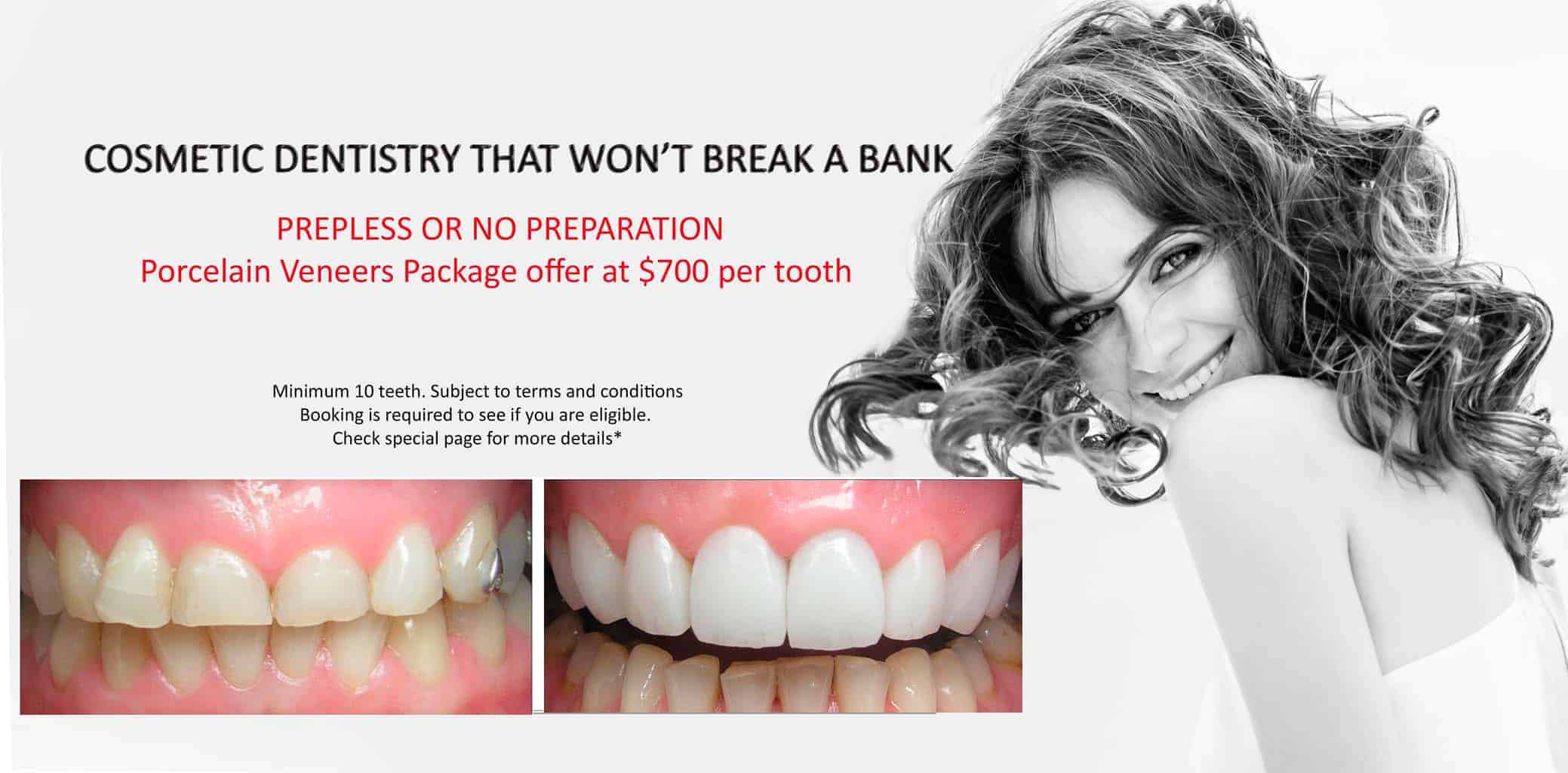
Aside from avoiding red wine, coffee, and smoking, there are a few additional tooth-staining items to be aware of. First, be aware of certain medications. Experts have found that certain medicines, like some antihistamines, include side effects like tooth darkening. Another thing to watch out for is trauma. When your teeth or gums sustain an injury, it can darken the underlying enamel. This causes the color of your teeth to darken as well. Lastly, make sure not to neglect your teeth. Although white teeth are aesthetically beautiful, it is important to prioritize brushing and flossing. Taking proper care of your teeth will help fight off small stains and keep your smile sparkling.
Teeth whitening has become a popular way to prepare for weddings and other social events where people want to look their best. But because some treatments can take time to be effective, you should make sure you leave enough time before the big day.
Home whitening kits using gels can take up to two weeks to achieve results, while whitening toothpastes can take up to four weeks and generally have less dramatic results. If you have your teeth whitened professionally by your dentist (sometimes called an “in-chair” treatment), the treatment may be completed in a single appointment.
It’s best to have realistic expectations before undergoing any whitening treatment. Your dentist should be able to explain what you can probably expect.
Not all whitening treatments are equally effective on all people, and not all teeth will whiten to the same degree. Teeth whitening can change a tooth’s colour by several shades, meaning teeth that are more stained or discoloured won’t whiten to the same degree as teeth that were whiter originally.
No one can really predict how much lighter your teeth will become. Every case is different. There are no guarantees as to the degree of whitening of your teeth.
- The amount of whitening varies with the individual.
- Additional whitening sessions and the use of ancillary whitening systems may be required to obtain desired results.
- In some instances lightening is minimal or unapparent.
- Typically, there is a two-shade improvement as seen on a dentist’s shade guide. The success rate depends upon the type of stain involved and your compliance. Bleaching can only provide a shift in colour from gray to a lighter shade of gray, for example. Bleaching does not lighten artificial materials such as resins, silicants, or porcelains.
- The amount of Tooth or Teeth whitening varies from patient to patient and cannot be predicted or guaranteed.
- But in general:
- Yellow or brown teeth, surface stains, and uniformly darkened teeth are easier to whiten than grey or bluish teeth. Striped or spotted teeth are difficult to whiten.
- The In-office Whitening System is a quick procedure that may or may not require additional whitening treatments in order to reach a desired lightened shade. Additional procedures or treatments could include take-home products or additional office visits.
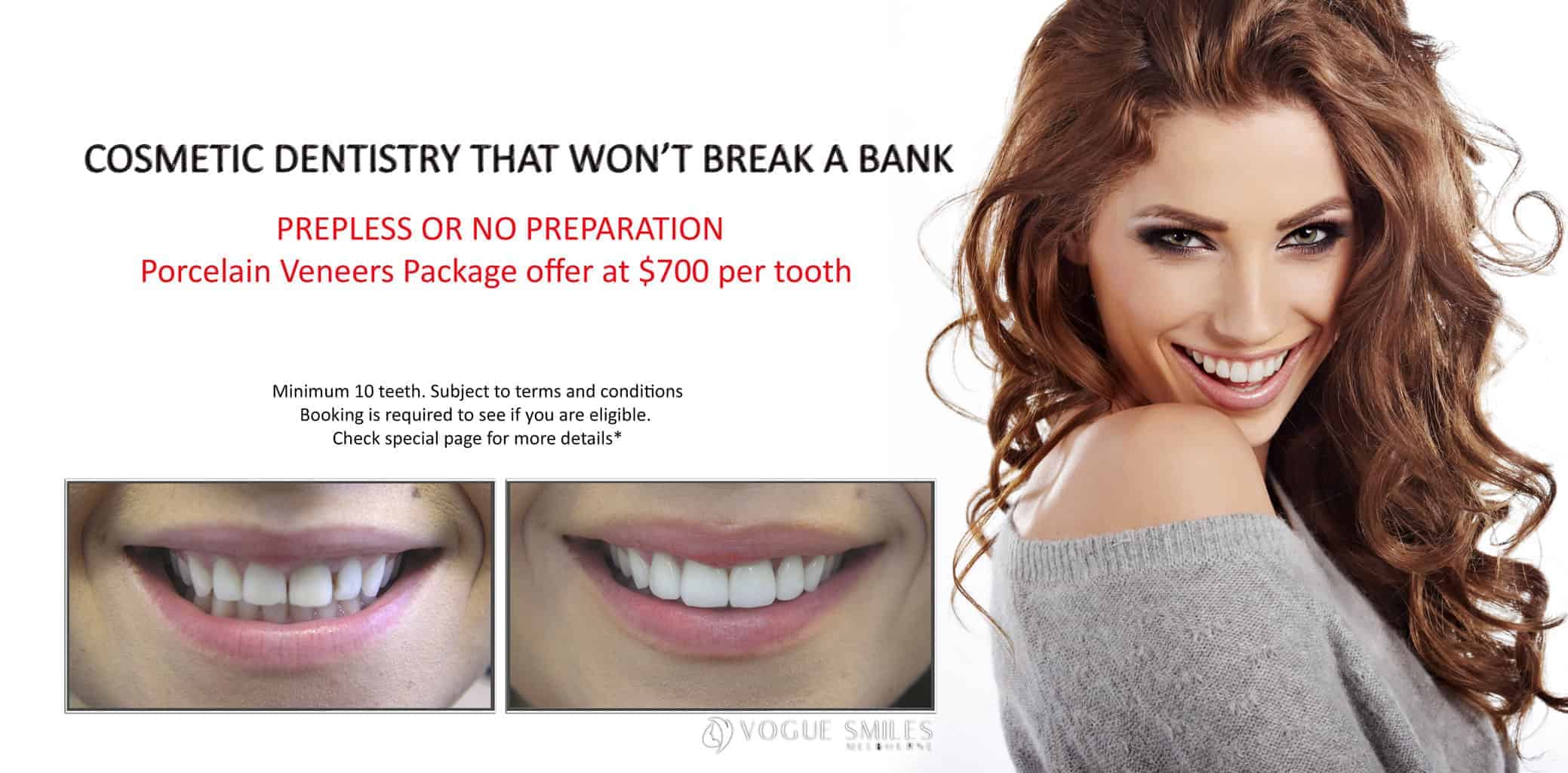
According to Mouth Healthy, and organization brought to you by the ADA, not everyone is a candidate for teeth whitening treatments.
They note that while yellow teeth are likely to bleach well, brown or grey teeth may not deliver an effective result. If you are unsure if you are a proper candidate, speak with your dentist to have a thorough examination.
Are you planning to get porcelain veneers or crowns? Realize that they are designed to match the color of your teeth. If you want lighter teeth, you should whiten your teeth before getting veneers or crowns so this dental work can be crafted to reflect the brighter shade of your smile. This is the best way to go about whitening with veneers.
After you’ve whitened your teeth, the tooth needs a chance to return to its healthy state and the color needs time to set. If you want to get crowns or porcelain veneers following one of these whitening treatments, you must wait a little time to let the tooth fully stabilize. This is the only way to ensure that your crowns or veneers will perfectly match the new shade of your smile. When you want to schedule whitening with veneers or crowns, wait about two weeks after your whitening treatment to begin your other dental work.
The short answer is “no.”
Drop those whitening strips! If you have dental implants, crowns, veneers, or dentures, you need to know the right way to keep them white.
Patients often assume that their dental prosthetics have the same characteristics as real teeth. While this is often true as far as biting and chewing are concerned, there are important differences between natural teeth and prosthetics, notably in terms of how they respond to whitening.
Traditional whitening treatments do not work on porcelain or most bonding materials, making it effectively impossible to whiten veneers, dentures, crowns, or implants once they are in your mouth.
Therefore, before you get implants, veneers, or crowns, it is important to discuss their effects on appearance with your dentist. By understanding what makes prosthetic teeth unique, you can continue to have a beautiful and functional smile.
Yes. Extensive research and clinical studies indicate that whitening teeth under the supervision of a dentist is safe. We consider tooth whitening to be the safest cosmetic dental procedure. As with any tooth whitening product, it is not recommended for children under 13 years of age and pregnant or lactating women.
Bleaching can only be performed on clean, healthy teeth and healthy gums.
Bleaching will not whiten existing fillings and crowns. Existing work may need to be changed so as to achieve consistent color.
Bleaching only works on enamel. Teeth which have thin enamel due to chemical or physical abrasion will whiten poorly.
Sensitive teeth are the most commonly reported side effect.
Sensitivity and some discomfort during and after the treatment may occur with some patients.
- On rare occasions, minor tingling sensations are experienced immediately after the procedure, but always dissipate, these symptoms are only temporary and disappear within a few days. Using a sensitive toothpaste for 2 weeks prior to treatment can help prevent any sensitivity.
- Analgesics before and after the procedure will manage the discomfort. It’s strongly advised also to have the procedure few days to few weeks before any special occasions like Weddings, anniversaries or any special events or functions.
- Peroxide solutions have been used for many years as antiseptics in the mouth. They are also widely used for their teeth-whitening effects.
- If tooth sensitivity develops, fluoride home care gel may be recommended for reducing sensitivity. If sensitivity persists-for more than 12 hours or is severe, please contact our office.
- The whitening procedure can cause temporary inflammation and white spots on your gums or lips. This should resolve itself within 12 hours. If it persists. Please contact our office.
- If you have teeth sensitivity, fillings that are breaking down, decay in your teeth, erosions of the teeth, or exposed root surfaces due to periodontal disease, the peroxide may have direct access to the affected areas. These conditions need correction prior to the whitening procedure. Please inform your dentist of such conditions prior to treatment.
- The whitening procedure can be very effective at whitening the teeth, but will not change the colour of fillings or crown(s) already in or on your teeth. For aesthetic reasons, such fillings may need changing after the whitening procedure.
- The whitening treatment plan has been reported not to be effective on some patients. Our office will provide our best efforts to whiten your teeth but lightening results cannot be guaranteed.
- The In-office Teeth Whitening procedure can sometime caused discomfort during the treatment. If you believe your tolerance or threshold level to pain is low, we strongly suggest taking Analgesics One hour before your Teeth Whitening appointment to our office
- For 48 hours after the treatment the teeth are susceptible to stains from red wine, fruit berries, rich coloured sauces, dark coloured vegetables, coloured spices and coloured mouthwash etc. Eat only “white foods” such as chicken, fish, white wine etc. Smoking should also be avoided for during this period.
- Keep your recall appointments with our office.
- If you have any questions or concerns contact our office.
- To keep your teeth looking their best, we recommend flossing, brushing twice daily with Whitening Toothpaste, and occasional touch-ups once a month or as needed with with the At-home teeth whitening treatment to achieve a long term, long lasting result
This is an excellent question. In-office whitening usually keeps your smile white for about 12 months. Teeth whitening with take-home products from a dental clinic usually lasts four to six months, and people will then need a touch-up. Over-the-counter (OTC) products that can be purchased from a drugstore or grocery store usually lasts for a couple of months before you need a touch-up. With any whitening treatment, the length that your white smile will last depending on your care and maintenance habits after the treatment. There is no official limit to the amount of time that you can get your teeth whitened. In most cases, this is a personal preference due to budget, desired results, and your likelihood to experience tooth sensitivity.
In general, there are three signs that you may be whitening too frequently: tooth sensitivity (in particular to cold air, beverages, or foods), inflamed or bleeding gums, and teeth that appear see-through along the edge. If you experience these symptoms and let them go untreated, it can lead to nerve damage in your teeth, thinning of tooth enamel, or burning of your gums. If the damage gets too severe, we may not have the ability to reverse the damage is yet another reason why in-office is typically recommended, as a trained dentist can be looking for warning signs and can provide you with suggestions on the best way to maintain your smile, and protect the longevity of your teeth and gums. For more information or to schedule an appointment, please contact us.
Definitely this is not a lifetime result producing system. The answer to this question depends upon many factors such as diet, if you smoke, if you drink tea or coffee and what your oral hygiene program is like. Many patients choose to “touch-up” their teeth every 1 or 2 nights. “Touch-ups” are especially useful for patients that drink beverages that stain teeth, like coffee, tea, and colas.
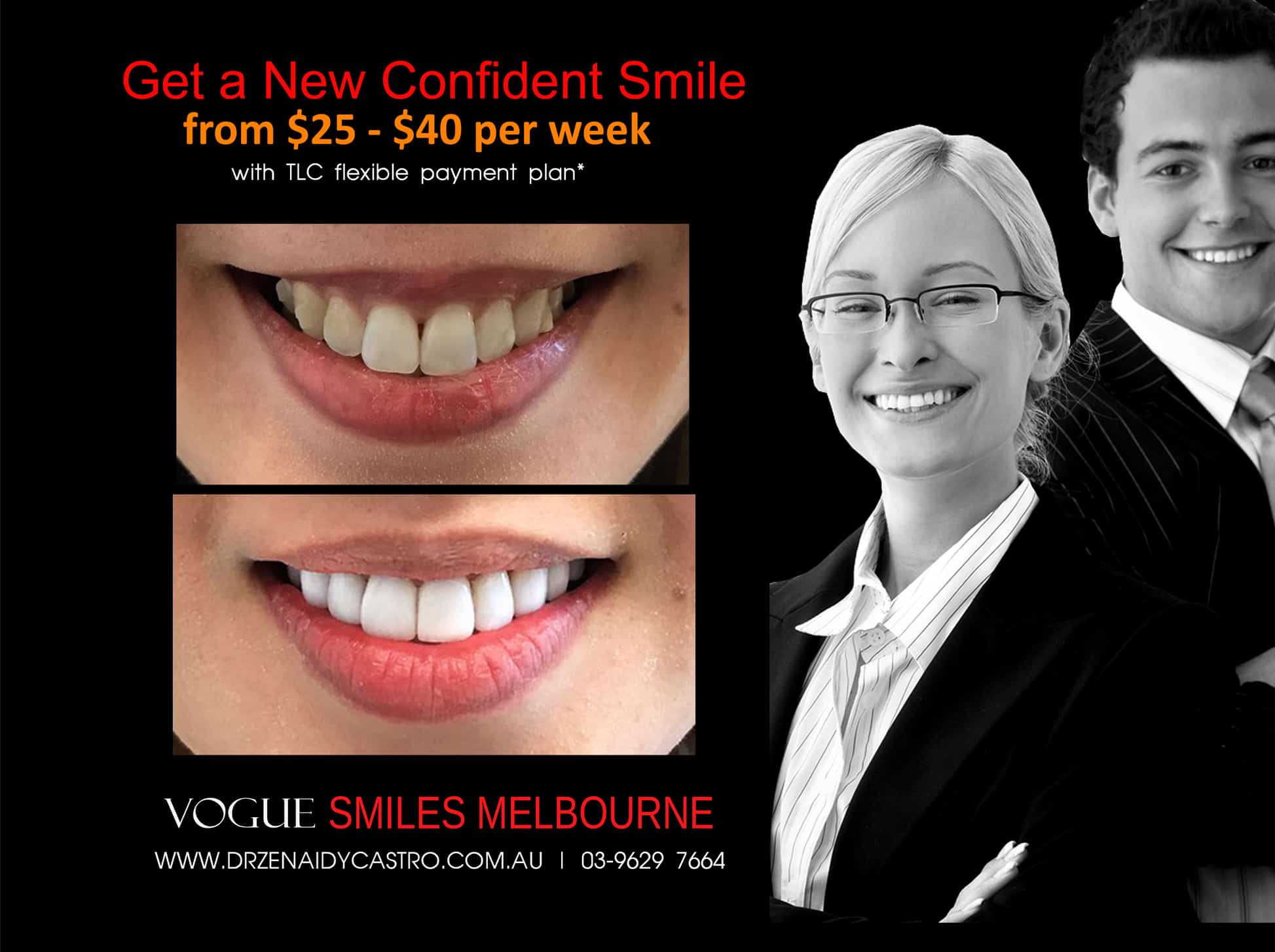
Teeth whitening doesn’t last forever. Some patients are hypersensitive. Whereas Veneers can permanently whiten your teeth and at the same time, it can conceal other aesthetic flaws.
So the answer is YES with placement of porcelain veneers.
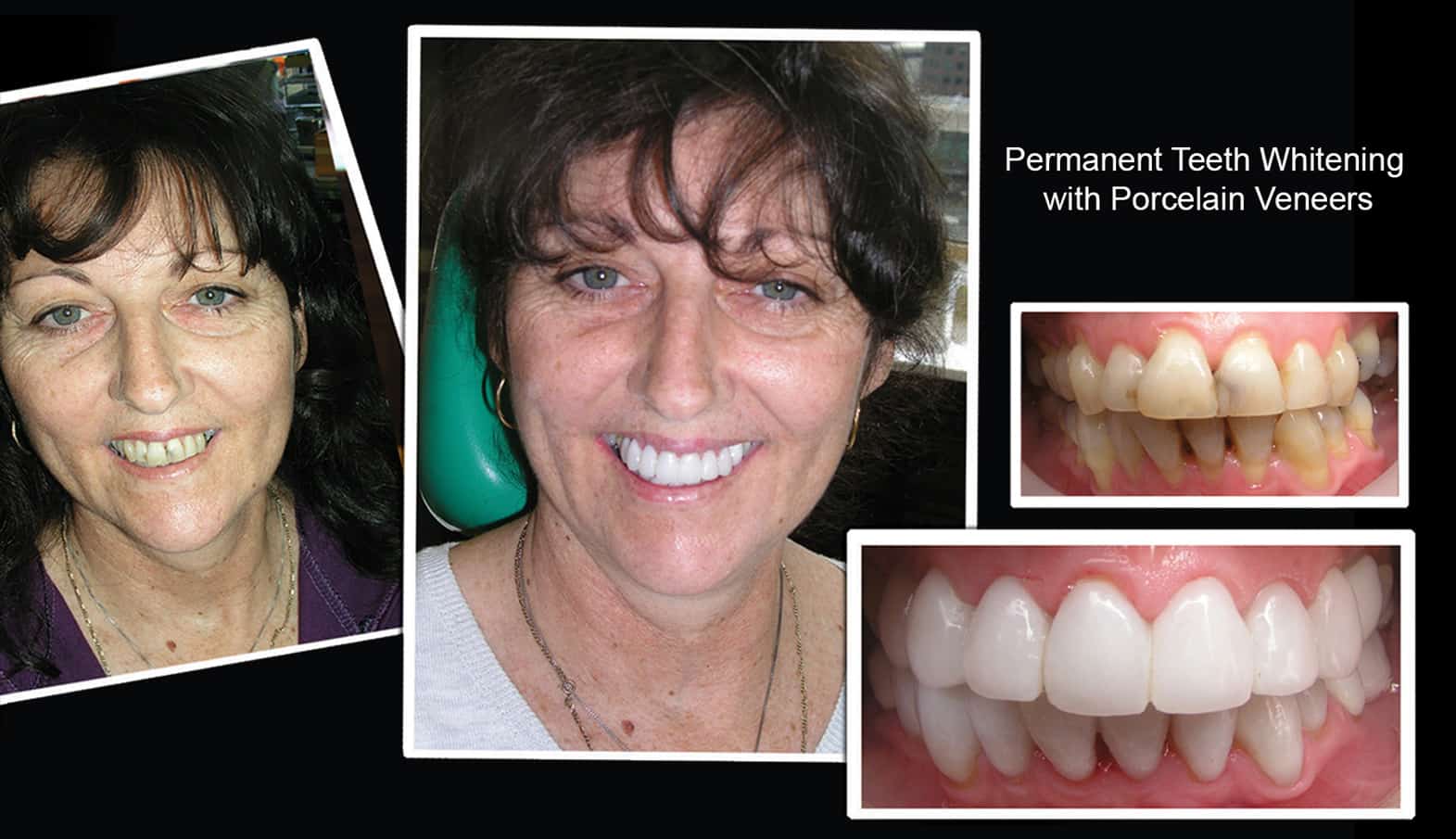
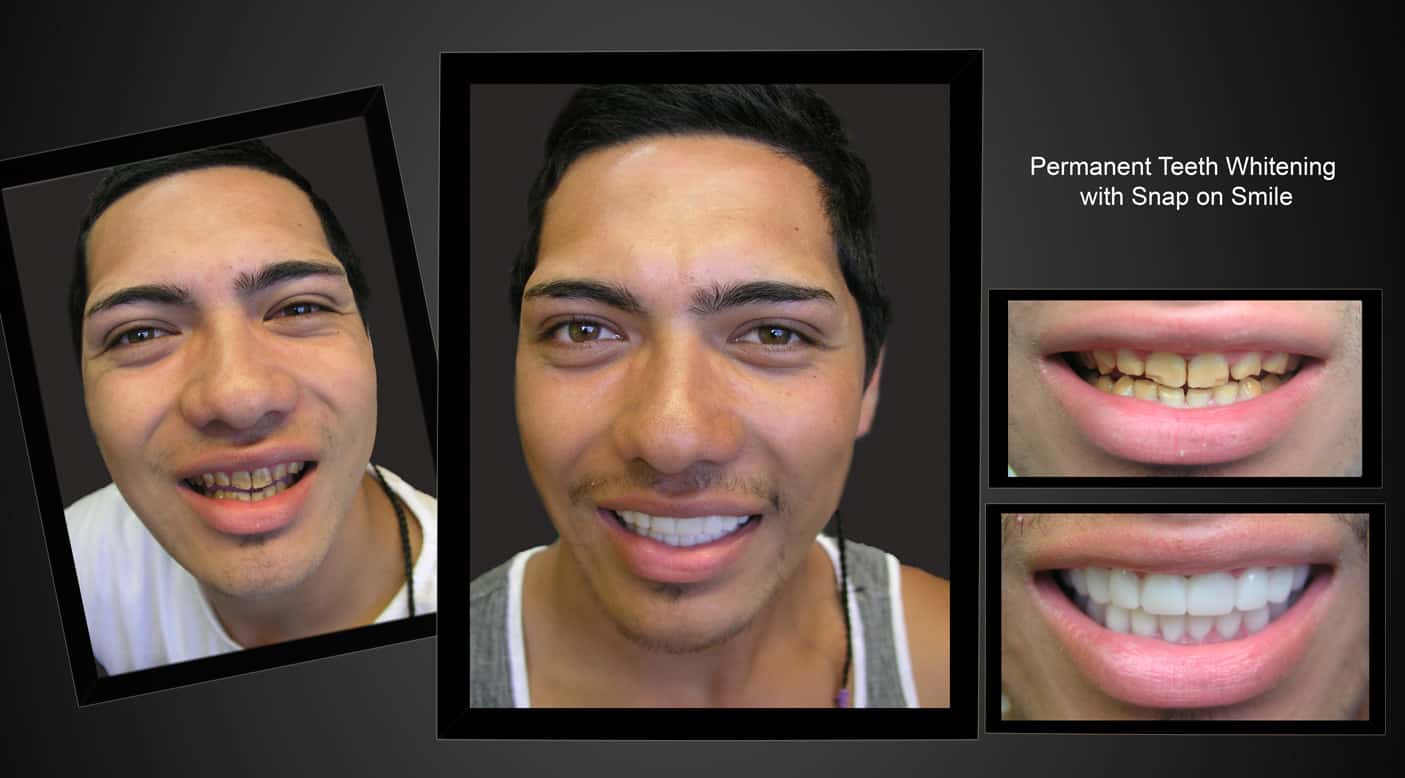

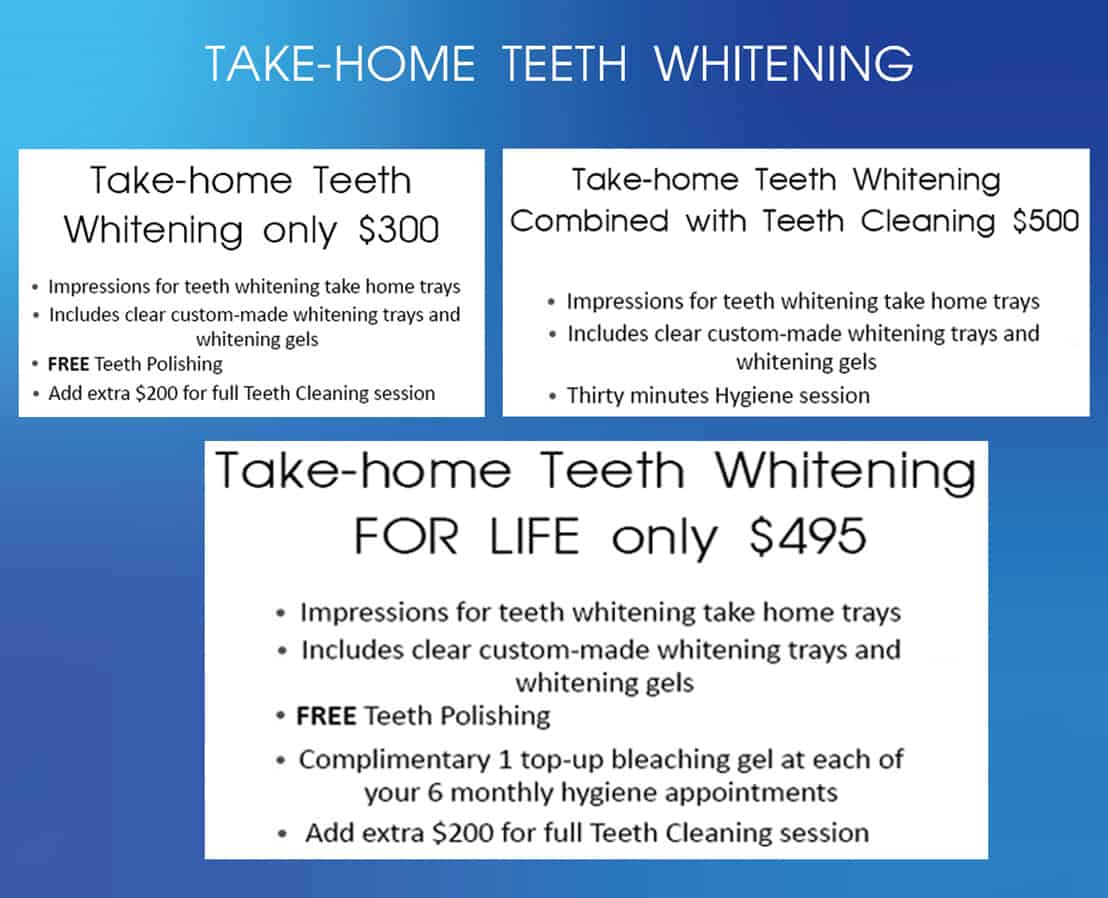
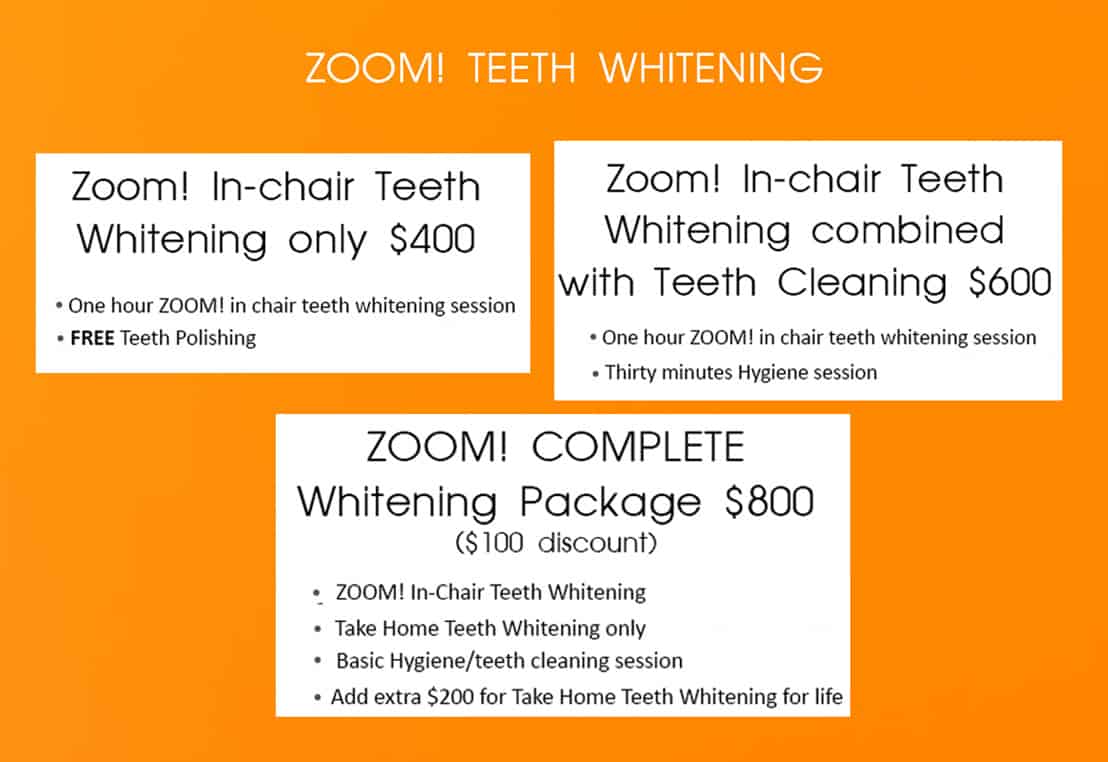
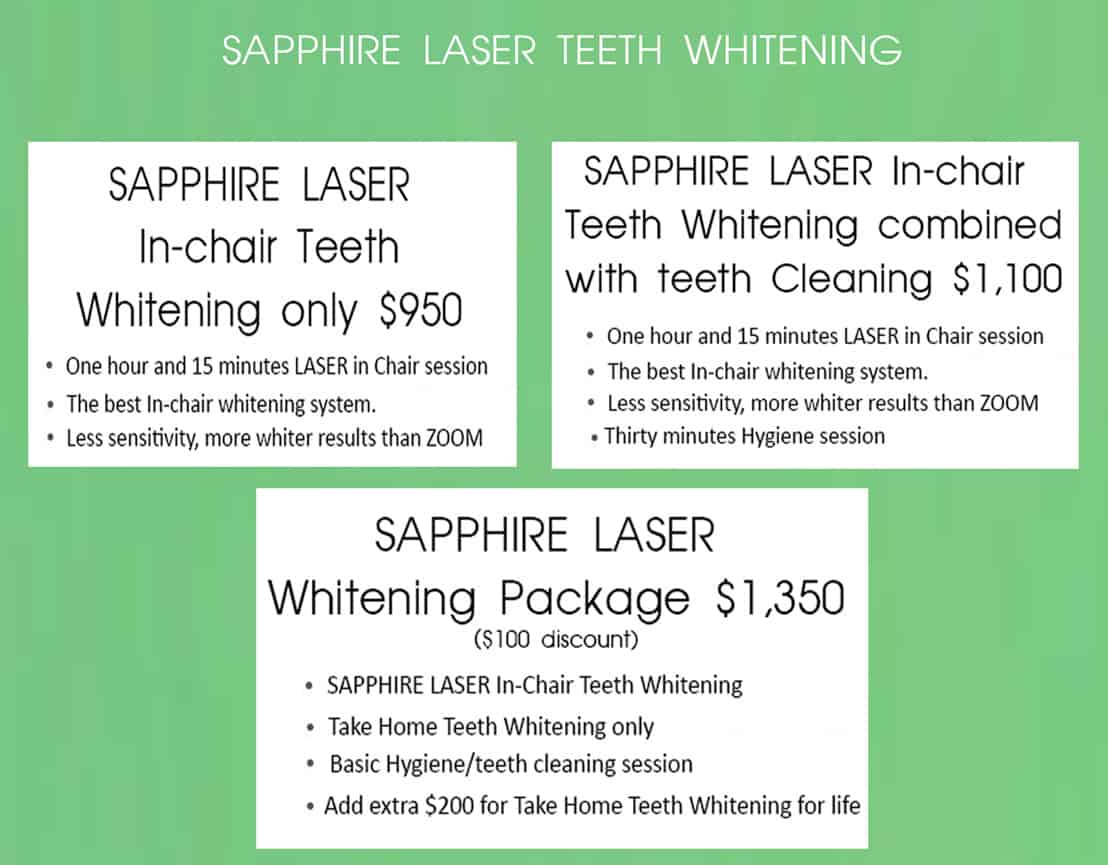
DISCLAIMER ON OUR TEETH WHITENING SPECIALS AND PACKAGES OFFER:
- Subject to Terms, conditions and availability. Offer subject to change or end without notice.
- Please call our office on 9629-7664 to check availability of this pricing and offer.
- In-office assessment is needed to assess if you are a good candidate for teeth whitening procedure.
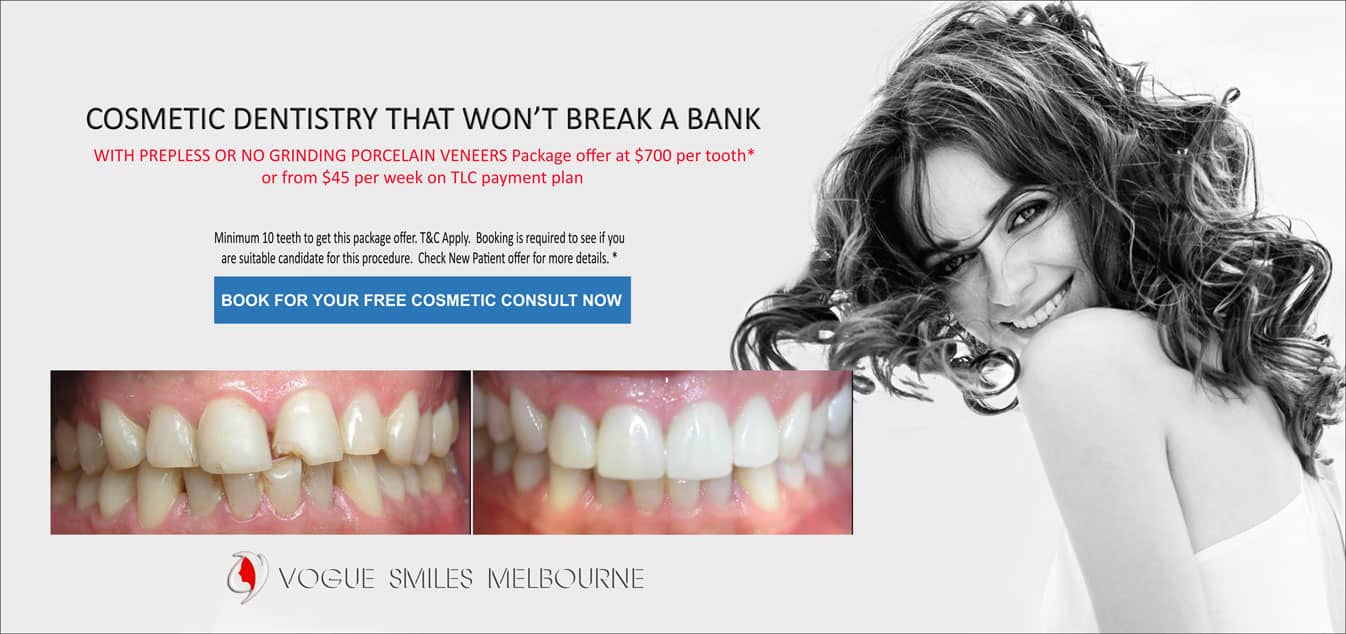
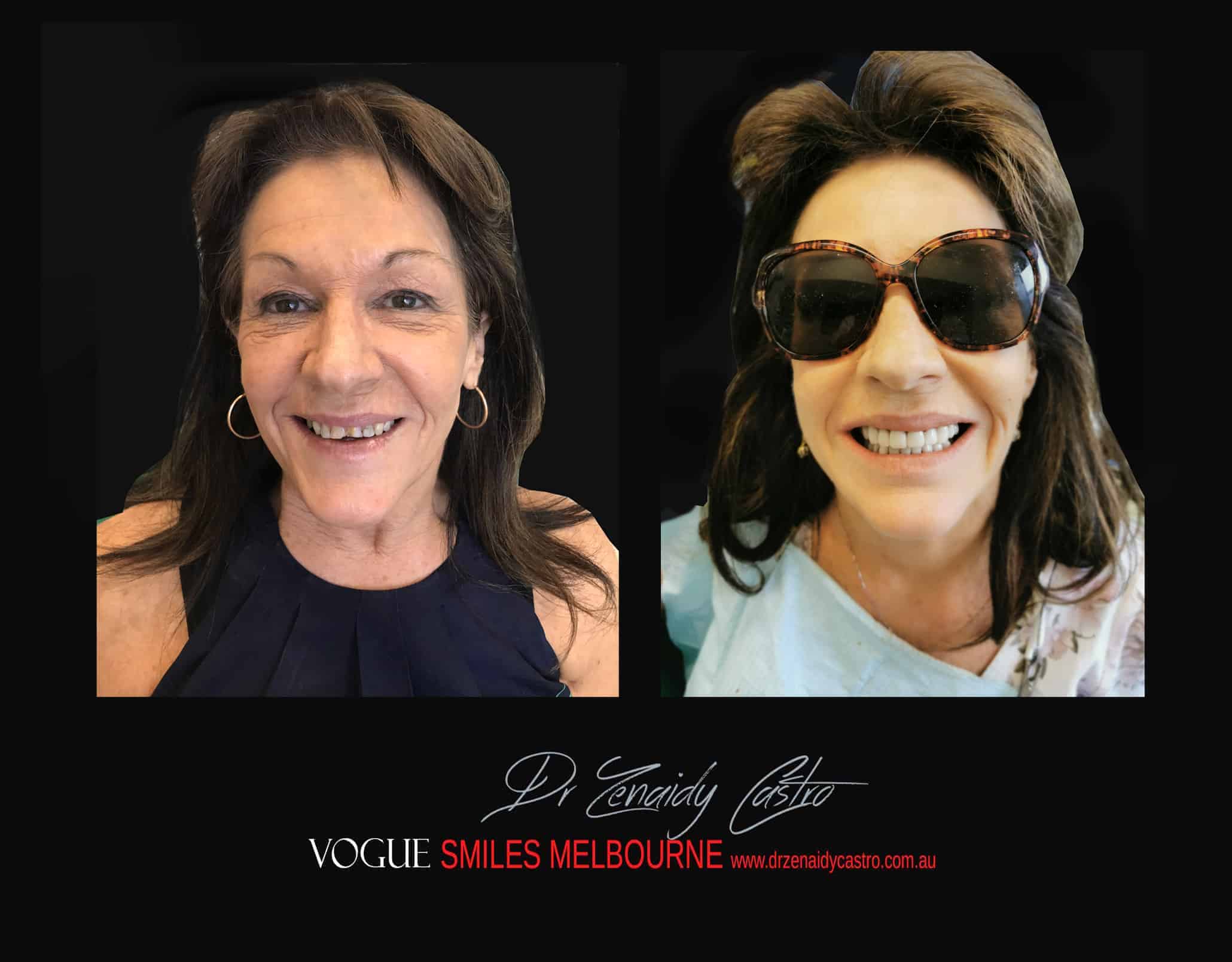
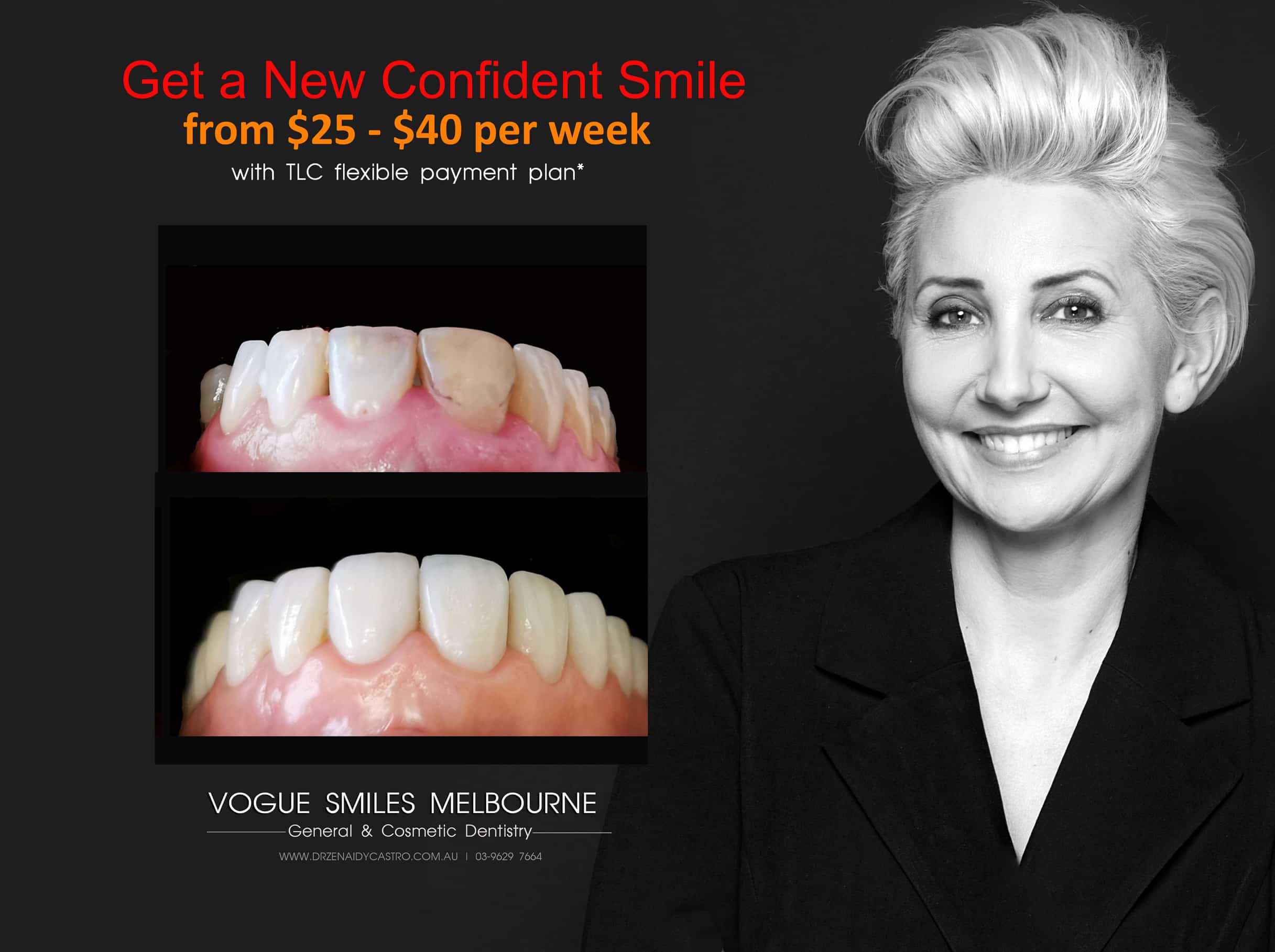
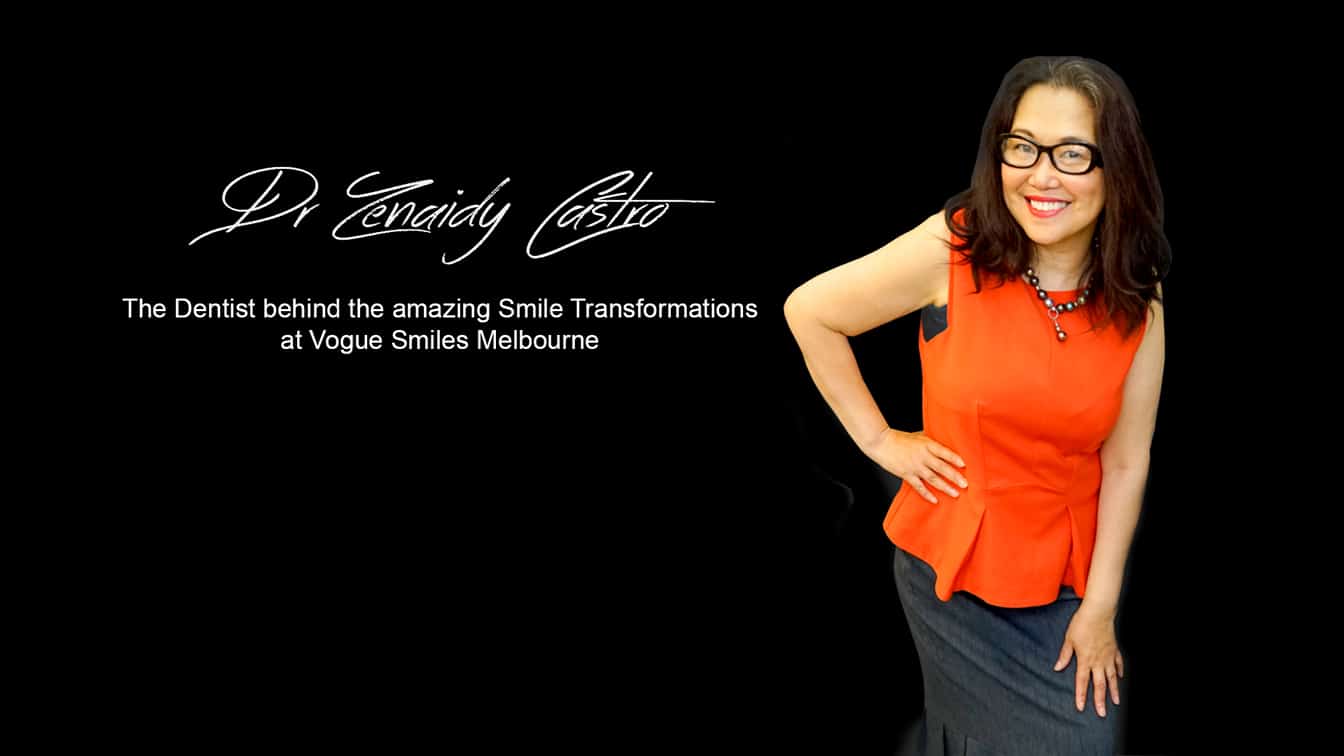
Dr. Zenaidy Castro understands the impact a beautiful smile can have on your daily life. She takes the time to listen to each patient’s goals in order to produce the best results for everyone who wants to have a better smile.
Dr. Zenaidy Castro love transforming smiles through cosmetic dentistry, and with her vast experience of over 30 years, the care and aesthetic results she provides for all her patients is unmatched. What sets her apart is her careful eye for detail and ensure they have superior results that meet her patients expectations.
She enjoys creating smiles based on the idea that each person is born with a unique smile, and believe that a beautiful smile is not a one-size-fits-all smile design or a an appearance that seems like coming from a single factory manufacturing line.
Dr. Zenaidy Castro will design the smile of your dreams. It is easier than you think! Just give us a call to set up your free aesthetic consultation and see for yourself what we can do to make your smile dreams come true. To learn more about working with Dr. Zenaidy Castro, contact Vogue Smiles Melbourne on 9629-7664.
Find out more about Dr. Zenaidy Castro as a dentist
Find out more about Dr. Zenaidy Castro as an abstract artist and Photographer
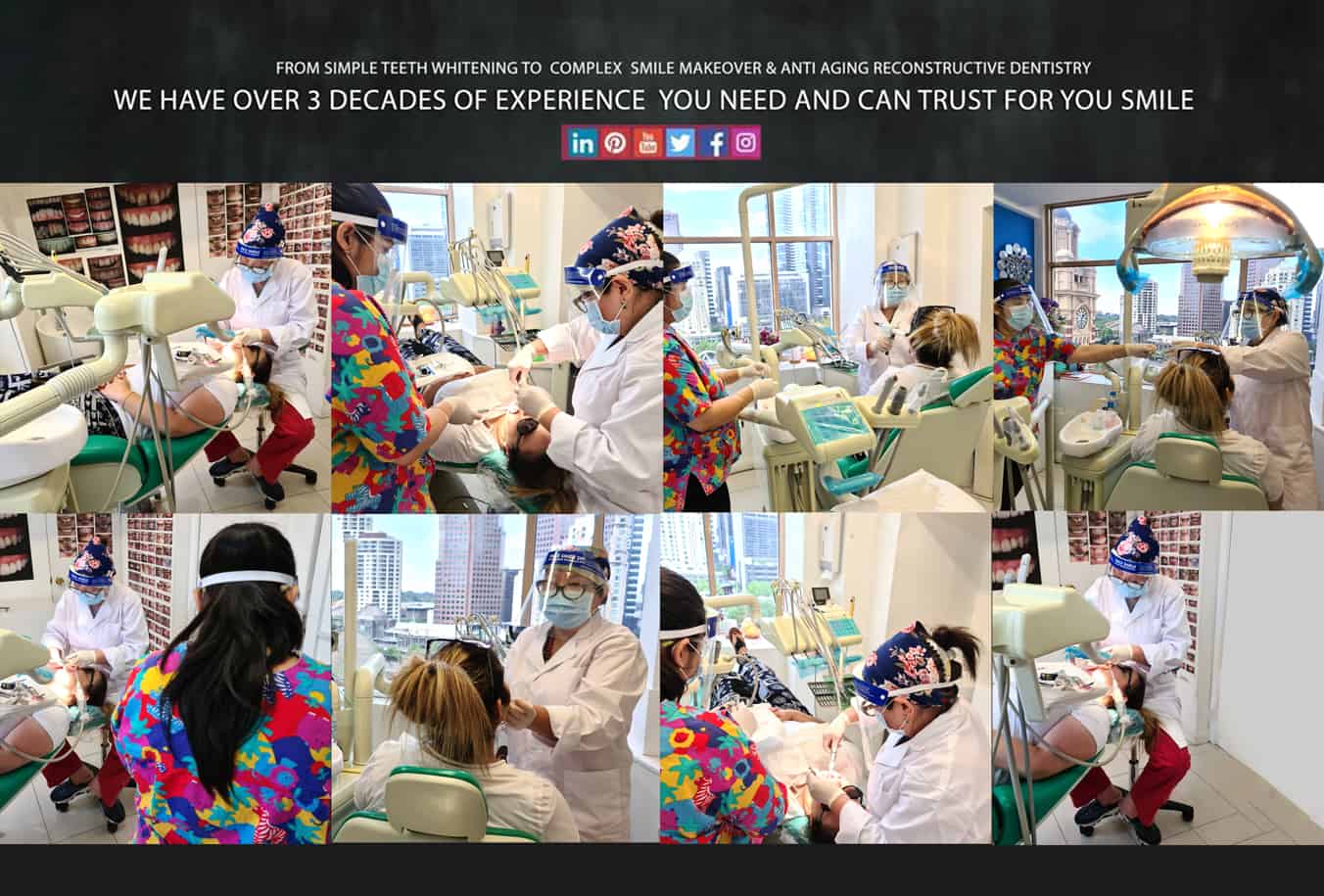
We don’t believe that dental care should be out of anyone’s price range. We want you to feel confident in a smile that looks attractive and functions naturally—and fits within your budget! If you don’t believe you can afford the dental treatment you need (or want), rest assured that we will try our best to help you afford the treatment you need. We have helped countless patients receive affordable dentistry, providing them with beautiful new smiles that have changed their quality of life.
Our team helps make our dental services affordable by assisting you in maximizing your insurance benefits and accepting a variety of payment methods.
Don’t let fear or embarrassment about your budget keep you from getting the dental treatments your smile deserves.
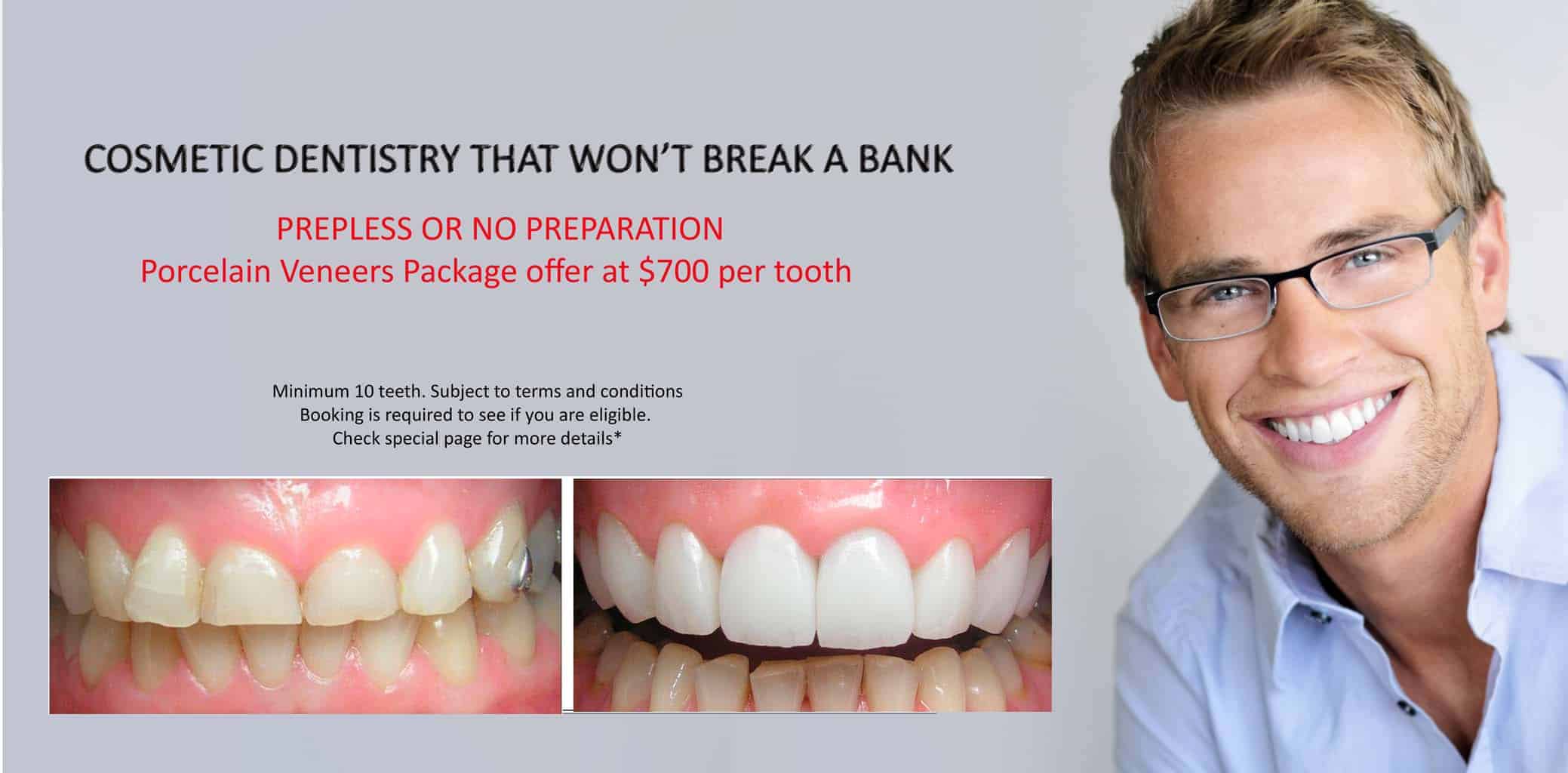
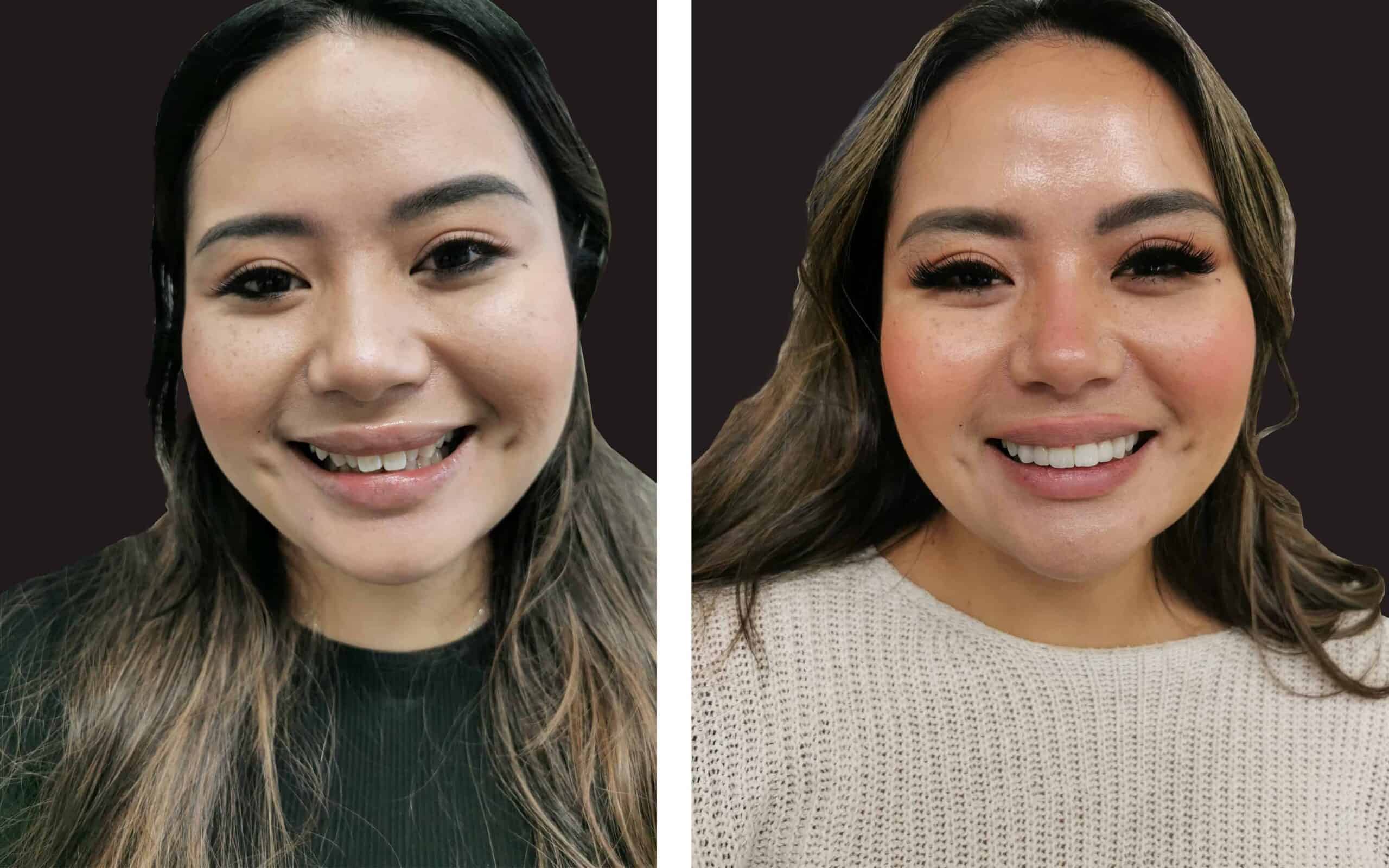

Disclaimer:
The information on this website is for information purposes only. Is not a substitute for a proper professional care and advice. Each patient’s outcomes, risks, potential complications, and recovery differ. Any dental procedure, minor or major, carries risks, some minor and some serious. Before and after images seen on our Social Media and website pages are our actual patient and have been published/posted with our patients’ permission. All of our patients photos are subject to Copyrights protection. We are strong believers in responsible aesthetics. Every cosmetic, medical, or dental procedure comes with its own set of risks and benefits. Cosmetic Dentistry results will vary from patient to patient. Call our office and book for an actual in-office consultation for us to assess if you are a good candidate for a particular treatment. All of our Specials and packages posted on this site are subject to terms, conditions and availability. The exact fee for a particular cosmetic procedure will be determined after a preliminary assessment distinguishing your unique personal needs and the type of work needed. The prices mentioned on any of our website as well as any mentioned payment plan by a third party source, are just a guide and is subject to change. Call the third party financing providers or visit their website for more info. Please call the office on 9629-7664 for further queries or clarification.


CONNECT WITH DR ZENAIDY CASTRO ON SOCIAL MEDIA
x | Instagram | Youtube | facebook | Linkedin | Tumblr | Flickr | BlueSky | Dentistry Instagram | YouTube | Dentistry Facebook | Australian Photographer & Cosmetic Dentist | Infinite Abundance | Gab | Minds | OK | Gettr | Deviant art | Independent Academia | PearlTrees | 500px | Gram.Social | Tiktok |
EXPLORE DR CASTRO’S ABSTRACT ART AND FINE ART PHOTOGRAPHY COLLECTIONS
SHOP | Corporate Art For Business Offices- Office Wall Art for sale | Hospitality Art | Healthcare and Hospital Art | Black and White Photography Curated Collection | Black and White Photography for sale Limited Edition | Best of Black and White Photos for Sale | Black and White Landscape and Nature Fine Art Photos | Landscape and Nature Photography Curated Collection | Country and Rural Landscape photos for sale | Waterscapes Photography | Immortalize your Pets Through art | Sphynx Cats in Art | Sphynx Cats - Hairless cats Photos for sale | Globe Trotting Dentist and Photographer | Travel Blog | Australian Abstract Artist and Photographer | Australian Photographer | Abstract Art | Sphynx cats in Youtube | IMMORTALIZE YOUR PET THROUGH ART | Panoramic Landscapes | Black and White Mountain | Black and White Trees, Woodland & Rainforest | Black and White Desert & Outback | Landscape and Nature Photography | Waterscapes | Minimalism | Country & Rural Scene Photography |
ARTS AND PHOTOGRAPHY RESOURCES
Unique Online Art Gallery Melbourne Australia | Black and White Photography Facts and History | The Art Buying Timeless Guide : How to Invest in Art | A Beginner’s Guide to Investing in Art Like A Pro | Investing in Emerging Artists : A Comprehensive Guide | Is photography considered an art? | List of Must-See Art Galleries and Museums Around the World | Coping with Pet loss & Pet Grief as a Transformational Journey | How to Choose Art for you Office or Business | Attracting Goodluck with fengshui and Vastu art principles | Colour Therapy and Choosing art & photography prints for Health care clinics and hospitals | Exotic Sphynx Cats in Fine Art | Sphynx Cats in Art | Sphynx Cats Photos for Sale | Travel Blog | BUSINESS AND TRADE DISCOUNT | ART TRADE PROGRAM | HOSPITALITY ART | Buy Black and White Photo Prints | Buy Fine Art Black and White Photography | Blog | Blogger | Medium | Behance | Weebly | Museum | Master of Monochrome - Black and White Photography |
READ ABOUT COSMETIC DENTISTRY IN MELBOURNE
Dr Zenaidy Castro | Cosmetic Dentist in Melbourne | Vogue Smiles Melbourne | Porcelain Veneers In Melbourne | Porcelain Veneer Special Package Offer Melbourne Australia | Smile Makeover Procedures | Cosmetic Dentistry Procedures Melbourne | Cosmetic Dentist in Melbourne Australia | Dental Bonding | Anti-aging Smile Rejuvenation | Dental Facelift | Teeth Whitening | Invisalign | Dental Crowns | Dental Bridges | Full Mouth Dental Reconstruction | Implant Alternatives | Emergency Dental Care Noble park North | General and Family Dental Clinic Noble Park North | Cosmetic Dentistry Before and After | Non-surgical facelift options without Invasive Surgery | Most Affordable Way to Improve Your Smile | Comprehensive Guide to the Cost of Dental Veneers | Cosmetic Dental Procedures for Smile Improvement | Dental Veneer Specials Melbourne CBD & Noble Park | Composite Veneers vs Porcelain Veneers | Alternative to Dental Implant or All-On-4 Implant in Replacing Missing Teeth | Dental Financing | Cosmetic Dentist near Glen Waverley, Mulgrave, Wheelers Hill area, Springvale | WOMOW | YOUTUBE | YELP | HOTFROG | FLICKR | TIKTOK | LINKEDIN | PINTEREST | TUBMLR | X | BEHANCE | DISQUS | HUBPAGES | WEEBLY | MEDIUM |
Serving General, Family, Cosmetic and smile makeover treatment including Porcelain Veneers, Dental Bonding, Full Mouth Reconstruction, Dental Crown and Bridges, Teeth Whitening and more in MELBOURNE CBD, NOBLE PARK NORTH and on the Surrounding Suburbs of Glen Waverley, Dandenong, Dandenong North, Noble Park, Springvale, Springvale south, Rowville, Wheelers Hill, Keysborough, Bangholme, Dandenong South, Lyndhurst, Boronia, Doveton, Clayton, Mulgrave, Mount Waverley



